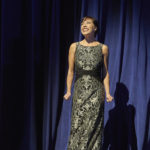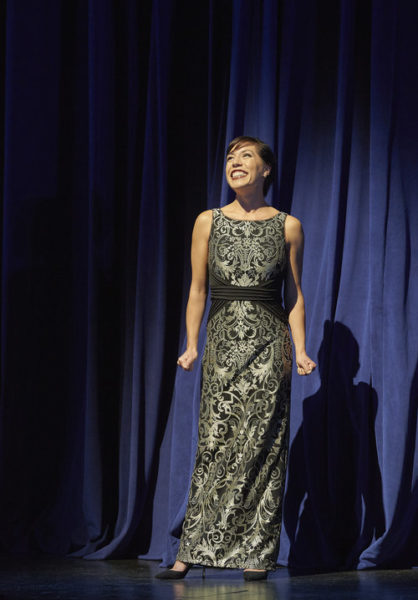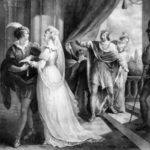[youtube https://www.youtube.com/watch?v=9QSCO4gMUGM]
This weekend we’re thrilled to be performing Airat Ichmouratov’s Youth Overture. The piece is a fantastical explosion of sound and energy, and asks a great deal from the orchestra – we’ve been looking forward to bringing his music to the Saskatoon audience for a few years!
The music of Russian-Canadian composer and conductor Airat Ichmouratov, has been performed by a wide range of ensembles and musicians in countries around the world, including Maxim Vengerov, Quebec Symphony Orchestra, Orchestre Metropolitain, Les Violons du Roy, New Orford Quartet, Yuli Turovsky & I Musici de Montreal, 13 Strings (Ottawa), Tatarstan State Symphony Orchestra (Russia), Alcan Quartet, Orford Camerata Ensemble, Mark Simons, Andre Moisan, Jean Francois Rivest, Alain Trudel, Yegor Dyachkov, and Stephane Tetreault, just to name a few. Versatile in form and style, Ichmouratov’s compositions have been influenced by Mahler, Shostakovich, Prokofiev, Rachmaninoff, and Mussorgsky.
Some of his recent works such as Fantastic Dances and Second String Quartet, were recorded by I Musici de Montréal for “Analekta,” Alcan Quartet for “ATMA,” and Cadenzas for Beethoven Violin Concerto by Alexandre Da Costa with Taipei Symphony Orchestra and Johannes Wildner as conductor for “Warner Classics.” His latest projects include the composition of Klezmer-influenced Quintet for Andre Moisan & Molinary Quartet, “Youth” Overture for Orchestre de la Francophonie, and Symphony No. 1 for Longueuil Symphony Orchestra.
Ichmouratov was named as Resident Composer 2012 at Concerts aux îles du Bic (Canada), in 2013 Composer of Summer at Orford Arts Centre (Canada) and in 2015 Summer Composer at 17e edition of the Festival Classique des Hautes-Laurentides (Canada). As of 2010, Ichmouratov is the Associate Composer with Canadian Music Centre.
Holding a PhD in orchestral conducting from the University of Montreal, Airat Ichmouratov has frequently been invited as the guest conductor of the Tatarstan’s State Symphony Orchestra, the Kazan Chamber Orchestra “La Primavera” (Russia), Orchestre Metropolitain, Laval Symphony Orchestra, Orchestra London, New Brunswick Symphony Orchestra, and also I Musici of Montreal and 13 Strings (Ottawa). Airat Ichmouratov served as Conductor in Residence of Les Violons du Roy in Quebec City from 2007 until 2009. One of their concerts under Ichmouratov’s direction, “Russian Impressions” also presented the world premiere of his Cello Concerto, which won the Opus Prize in the “Best Concert of the Year” category. Airat was appointed to the position of Assistant Resident Conductor of the Quebec Symphony Orchestra from 2009 until 2011. In August 2011, Ichmouratov conducted I Music de Montreal on tour in USA, Brazil, and Peru. In October 2011, he made his debut with Tatarstan Academic State Opera and Ballet Theatre (Russia) and was immediately re-invited to conduct Puccini’s Turandot during the 2012-13 season and on the following European Tour.
Born in Kazan, Russia, Airat Ichmouratov studied clarinet at the Kazan State Conservatory. In 1993, when he was appointed as Associate clarinetist of the Tatarstan’s Opera and Ballet Theatre, and of the Kazan State Symphony Orchestra, he began to extensively tour Europe. In 2000, he obtained a Master degree at the University of Montreal. He then founded the Muczynski Trio, which won first prize and the Grand Award at the National Music Festival (Canada, 2002) and First Prize at the 8th International Chamber Music Competition in Krakow (Poland, 2004). The Trio has also recorded for CBC and has given performances in Canada, China, Russia, and Europe.
In 2000, Mr. Ichmouratov joined the Klezmer group Kleztory, in which he plays the clarinet, composes, and arranges. In 2004, Kleztory recorded a unique CD; Klezmer Music with I Musici de Montreal and Yuli Turovsky, recorded on the “Chandos” label (Great Britain). In 2007 Kleztory’s album “Nomade” won the Opus Prize. His most recent (2014) Album Arrival was nominated as Best album of the Year in the Traditional music category by ADISQ. In 2012, Kleztory won Klezmer Furth Prize at International Klezmer festival and Competition in Amsterdam, and as a result appeared at the Furth Klezmer Festival during the following spring. With Kleztory Ichmouratov has appeared as soloist with several orchestras, including the Montreal Symphony Orchestra, the Quebec Symphony Orchestra, I Musici de Montreal, Les Violons du Roy, and Brussels Chamber Orchestra and toured intensively in Canada, USA, Brazil, Mexico, Costa Rica, Romany, Belgium, Austria, Hungary, Switzerland, Netherlands, Germany, and China.
You can hear his Youth Overture February 9th at TCU Place with the SSO!
 Hailed for her rich, full sound, Jardena Gertler-Jaffe is a mezzo soprano from Saskatoon, Saskatchewan. A graduate of the Bachelor’s of Music in Vocal Performance at the University of Toronto (2015), Jardena is also an alumna of celebrated training programs SongFest and Opera NUOVA. Her past voice teachers include Nancy Argenta, Monica Whicher and Patrick Raftery, and she is currently studying with Audrey B. Luna in Cincinnati, Ohio.
Hailed for her rich, full sound, Jardena Gertler-Jaffe is a mezzo soprano from Saskatoon, Saskatchewan. A graduate of the Bachelor’s of Music in Vocal Performance at the University of Toronto (2015), Jardena is also an alumna of celebrated training programs SongFest and Opera NUOVA. Her past voice teachers include Nancy Argenta, Monica Whicher and Patrick Raftery, and she is currently studying with Audrey B. Luna in Cincinnati, Ohio.

